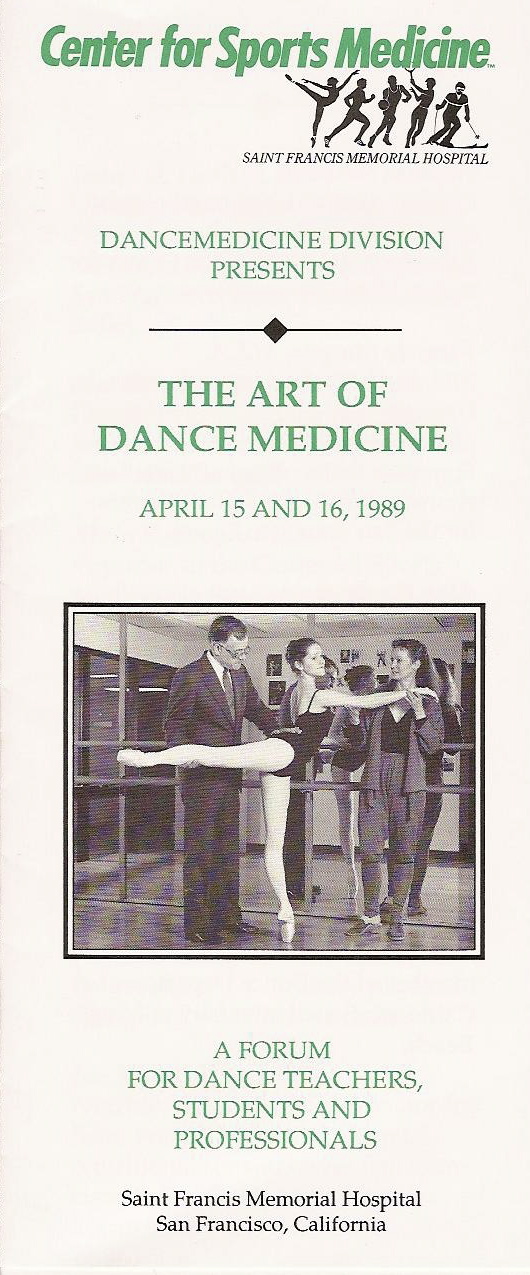I have been involved with Pilates more or less since the late 1980s. I was first introduced to Pilates principles while studying dance with Mercy Sidbury at Sonoma State University. My curiosity piqued, I went to the SSU Library and checked out The Pilates Method of Physical and Mental Conditioning by Philip Friedman and Gail Eisen. This was a hardcover book, originally published in 1980, and the first of its kind to bring Pilates out of private studios and present it to the general public. I studied the book and began practicing on my own both at home and before ballet class to strengthen my awareness of and build my ability to move from and stabilize my core.
 In the spring of 1989 I attended The Art of Dance Medicine presented in San Francisco at Saint Francis Memorial Hospital’s Dancemedicine Center. Alan Herdman presented “Floorbarre for the Dancer” which for me, at the time, was synonymous with Pilates mat work. A couple of years later, after I injured my left hamstring dancing, I ended up rehabbing at St. Francis Memorial Hospital’s Dancemedicine Center where I was exposed to Pilates in more depth. At that time, Pilates was not readily available in Sonoma County, and traveling to San Francisco for one hour of therapy was a bit of a burden to me. I decided to treat my hamstring injury with hands-on manual therapy, rather than through corrective exercise. That choice led me down the path to become a Rolfing® practitioner which I have written about previously.
In the spring of 1989 I attended The Art of Dance Medicine presented in San Francisco at Saint Francis Memorial Hospital’s Dancemedicine Center. Alan Herdman presented “Floorbarre for the Dancer” which for me, at the time, was synonymous with Pilates mat work. A couple of years later, after I injured my left hamstring dancing, I ended up rehabbing at St. Francis Memorial Hospital’s Dancemedicine Center where I was exposed to Pilates in more depth. At that time, Pilates was not readily available in Sonoma County, and traveling to San Francisco for one hour of therapy was a bit of a burden to me. I decided to treat my hamstring injury with hands-on manual therapy, rather than through corrective exercise. That choice led me down the path to become a Rolfing® practitioner which I have written about previously.
I drifted away from Pilates after I moved to Washington state in 1992. I was busy preparing to train as a Rolfer and it was difficult to be present with ballet and Rolfing and Pilates all at the same time. I had to focus on one or two things. Through dance, however, I continued to do some mat exercises, in particular with Marcia Quigley at the Maple Valley School of Ballet.
Many of my colleagues in the Rolfing community are quite drawn to the Gyrotonic Expansion System® and that type of non-linear, undulating movement began to appeal to me. By early 2000 I had experienced a couple of unpleasant episodes doing Pilates mat work classes at the local gym. One in particular stands out in my mind. The instructor had us stand at the wall and attempt to flatten our backs against the wall, trying to “imprint” the lumbar spine. That had the effect of putting my sacrum “out” and lead to several days if not weeks of an intense low back pain episode. I began to become a fan of what is known as the “neutral spine” in Pilates and decided to check out Gyrotonic as soon as I had the chance.
When I moved back to California in 2002 I contacted local Master Gyrotonic Instructor Manisha Holzwarth, and I did months of private work with her. Also, percolating through the Rolfing community, primarily through the World Congress on Low Back & Pelvic Pain, came much discussion about low back pain and spinal stability. The Rolfing community was talking about physical therapist Diane Lee and Australian researchers Carolyn Richardson, Paul Hodges and Julie Hides. Their research has shown that anticipatory recruitment of the transversus abdominis and multifidus is absent or delayed in patients with low back pain or a history of low back pain episodes. Why is this important? Because these muscles stabilize the spine so that other muscles can move the trunk without compromising the integrity of the spinal joints. I started researching co-contraction, the simultaneous activation of the transversus abdominis, multifidus, pelvic floor, and diaphragm. I found out that physical therapy had, so to speak, incorporated Pilates into their own body of knowledge.
As a Rolfing® practitioner I see many clients with low back pain. I believe it is not enough to correct motion restrictions and structural imbalances in people’s spines and pelvises without educating and re-training them in the correct use of their bodies as well. The research has shown this essential. And so I find myself in 2009 having come full circle from 20 years ago. I just became a Certified Mat Trainer in ITT Pilates. My desire is to become a better teacher and resource to my clients who suffer with back pain and stability issues. I also would like to bring all my knowledge to bear in teaching groups and in general improve the quality of what’s out there and available to the general public. Having worked one on one with people for so many years now I feel the impulse to share my knowledge in a bigger way.
© Carole LaRochelle, 2009.



Great post- well written and man! woman! you have been learning a lot over the years! Thank you for your hunger for body-mind knowledge and thank you for your passion to share and teach this life transforming – very healing information.
Great post! We need more “body smart” people in the Pilates world. Welcome.
Liz,
Thank you for reading and responding. I looked you up on your website and see that you are in Fountain, Colorado. Looks like you have a pretty impressive background as well. Thank you for your encouragement and welcome to the Pilates world.